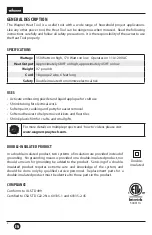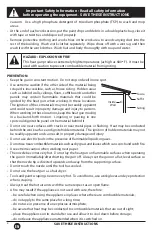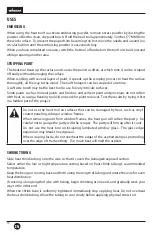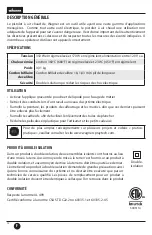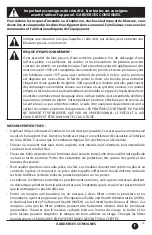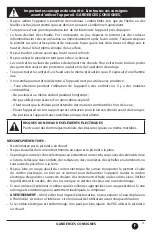
10
EN
USES
EMBOSSING
When using the heat tool to activate embossing powder, remove excess powder by dusting the
powder off with a clean, dry paint brush. Hold the heat tool approximately 3 inches (77 MM) from
the work surface. To prevent the paper from becoming too hot, move the nozzle end around in a
circular fashion until the embossing powder is raised and shiny.
When you have completed one area, switch the hot tool off and return the tool to its built-in stand
while preparing another area.
STRIPPING PAINT
The heat tool heats up the surface and causes the paint to soften, at which time it can be scraped
off easily without damaging the surface.
When working with several layers of paint, it speeds up the scraping process to heat the surface
thoroughly, all the way to the wood. Then all the layers can be scraped at one time.
A soft wire brush may be the best tool to use for very intricate surfaces.
Some paints such as mineral paints and finishes, and cement paint and porcelain, do not soften
with heat, so using a heating tool will not work for paint removal. Test the results by trying it first
in a hidden part of the project.
Do not use the heat tool on surfaces that can be damaged by heat, such as vinyl-
coated paneling, siding or window frames.
When removing paint from window frames, the heat gun will soften the putty. Be
careful not to gouge the putty with the scraper. The putty will firm up after it cools.
Do not use the heat tool on insulating laminated window glass. The glass edge
expansion may break the edge seal.
When scraping fascia, do not overheat the edges of the asphalt shingles protruding
over the edge of the sheathing. Too much heat will melt the asphalt.
SHRINK TUBING
Slide heat shrink tubing onto the wire so that it covers the damaged/exposed section.
Select either the low or high temperature setting based on heat shrink tubing’s recommended
temperature.
Keep the heat gun moving back and forth along the length of tubing and rotate the wire for even
heat distribution.
If covering a long length of wire with tubing, begin shrinking at one end, and gradually work your
way to the other end.
When the shrink tube is uniformly tightened immediately stop applying heat. Do not overheat
the heat shrink tubing. Allow the tubing to cool slowly before applying physical stress to it.
Содержание MICRO HEAT TOOL
Страница 35: ...35...


